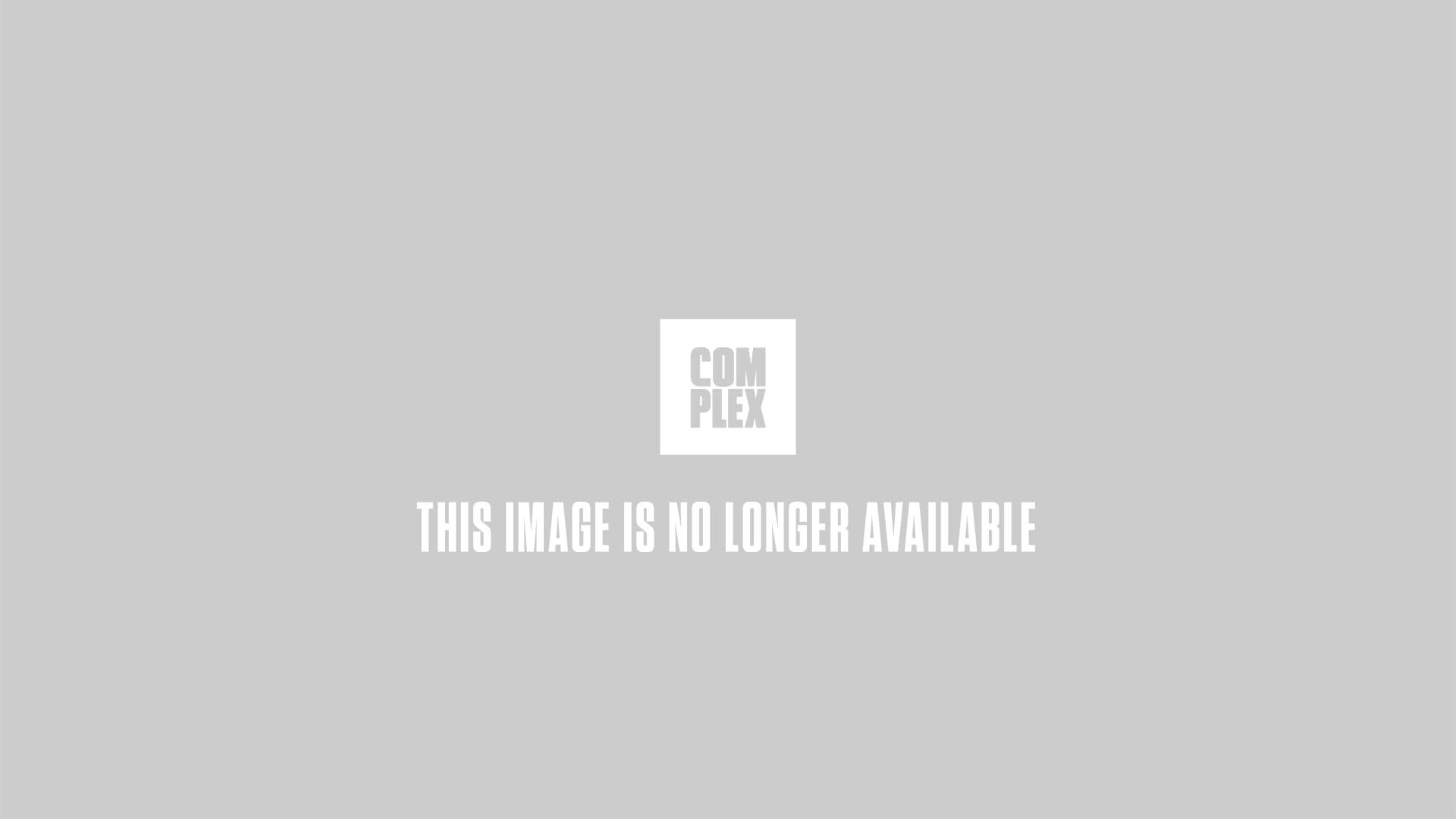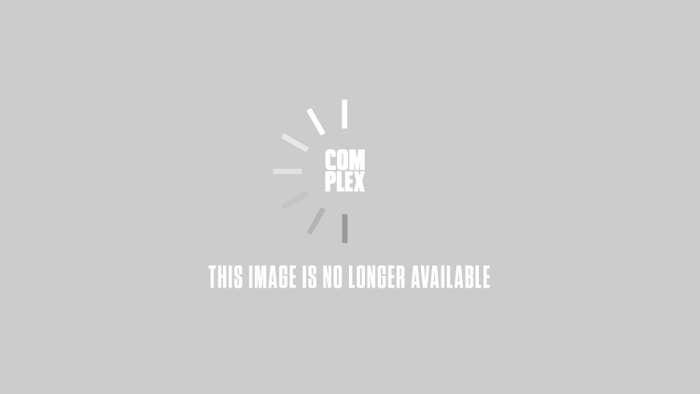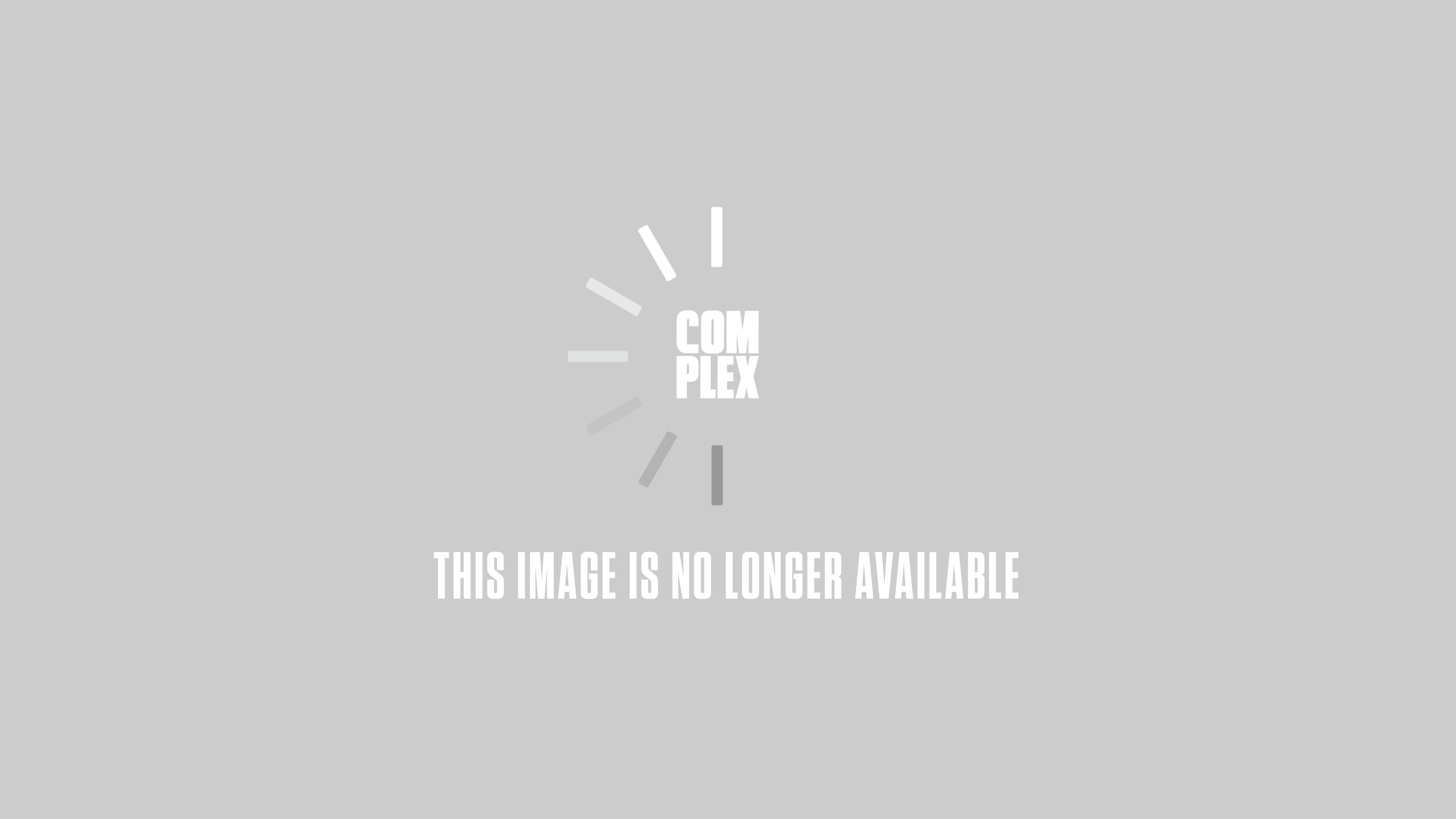
As music festival culture has gotten bigger, more brand-sponsored, and more talked about, events like Coachella become the main topic on people's tongues (and Twitter feeds) for weeks before and after they happen. Your friends' Instagrams aside, there are photo pits full of professional photographers at these major events who document music festivals for publications and the bands to have for years to come.
While it may seem like a glamorous job—being in such close proximity to bands and their performances—it's hard work. As anyone on our list of How To Make It: 10 Rules for Success From Freelance Photographers list would tell you, it's a constant grind, especially at a live event.
Coachella has been going on since 1999 (it used to be held in October), and back then, artists like Beck, Tool, and The Chemical Brothers were the headliners people came to see. As the photographers we spoke to note, the festival (now three days x two weekends long instead of two days x one weekend long; it was actually only one day in 2001), has become way more focused on hip-hop and EDM acts.
To get a sense for how the festival has changed from the perspective of those documenting it, we interviewed 5 Photographers About Shooting the First Five Years of Coachella. They also let us know the favorite photo they've shot and the positives and negatives of covering such a high profile event.
Years photographed: 2001, 2005
Were you on assignment to shoot Coachella?
In 2001 I was occasionally shooting for Hunter College's school paper, The Hunter Envoy (even though I wasn't going to Hunter nor had I ever gone to Hunter). I used the paper to get myself a photo pass for Coachella, but I wasn't actually on assignment for them. In 2005 I was also not on assignment; a friend hooked up a photopass for the 2nd day of the festival the morning of.
The stage is usually very high, so you may be shooting right up the artist's nose.
What are the immediate positives and negatives of photographing a festival like Coachella?
The positive of shooting a festival like Coachella is that you get the opportunity to shoot some of the biggest acts in the world. It's much harder to get that kind of access for mega bands when they are playing their own show. The negatives are that there are usually way too many people in the photo pit, many of them are amateurs, and the stage is usually very high, so you may be shooting right up the artist's nose.
I had a black sweatshirt on, and they didn't seem to notice my lack of wristband.
What do you think you captured in the first five years of Coachella that couldn't be captured now? Has the culture changed?
I'm not sure how the culture of shooting festivals has changed, but the culture of Coachella has changed quite a bit. It is def much more scene-y now. It's still loads of fun but definitely less about the music and more about the scene.
Do you have a favorite shot from shooting the first five years of Coachella?
My favorite shot is probably this silhouette of Trent Reznor. First of all, I wasn't supposed to be in the pit for this even though I had a photo wristband. After the guards had already let me in the pit, I found out that you needed a separate special wristband just to shoot NIN. They asked us all to hold up our hands to show the black wristband. I had a black sweatshirt on, and they didn't seem to notice my lack of wristband. Once the show started, it was nearly impossible to get a clean shot. There were men operating huge lights right in front of the stage between the photographers and the band. On top of that, the lights were constantly changing. So really it was all a bit of luck, but I love the intensity of this shot.

Years photographed: 2002, 2003
Were you on assignment to shoot Coachella?
I was on assignment in 2002 and 2003 to shoot Kosheen, The Roots, Primal Scream, Cornershop, QOTSA, The Libertines, and the Section Quartet.
Being unique in a sea of images is quite the magic trick in 2014.
What are the immediate positives and negatives of photographing a festival like Coachella?
It's harder getting an unsuspected photo now—whether that’s on stage or not—but again, that's more to do with the fact that everyone has a camera these days. Being unique in a sea of images is quite the magic trick in 2014.
What do you think you captured in the first five years of Coachella that couldn't be captured now? Has the culture changed?
Well, the festival lent itself to be a trendsetting affair back then, but now, it's very aware of that fact. When I first went (the first year in 1999), it was ALL about the bands. There was no E! coverage of who was wearing what, there were no fashion survival guides, star-studded afterparties, or Express Jeans hangouts; it was all about the music. Nothing else mattered. It was really the first time a kid from Ohio could travel to one location in the states and see amazing DJs, headline acts, and UK artists that just didn't tour as much back then—all for less than $58 bucks in 1999, I might add.
Now it's more of a place to be seen instead of seeing bands. I'm amazed by how the culture has changed from one of hardcore music nerds to one of cell phone selfies, fashion shows, and gossip parties. Obviously that's a commentary on music and pop culture in general, but it really applies at an event like Coachella. The mentality of "look where I was" has definitely trumped "guess who I got to see perform."
In those first years you would bump into movie stars singing along with songs, and they weren't just there for the press opp or goodie bags.
As the sponsors came running in droves after the first few years, those things became a necessary part of it. It's helped make it the huge landmark event it is today. Early on I think the images of Coachella are more authentic in a way; this is really evident when shooting the crowds. In those first years you would bump into movie stars singing along with songs, and they weren't just there for the press opp or goodie bags. It was also a lot easier to actually SEE or photograph bands at Coachella until about 2003 and 2004 (when the festival really took off, in my opinion). The crowds were nowhere near what they are now, and the bands played it like another show on their tour.
Do you have a favorite shot from shooting the first five years of Coachella?
I liked my shot of Flea in 2003, mainly because he's so focused on the task at hand. It was film, and it sorta looks like an old school punk photo in a way. It was also the first time at Coachella I felt the crush of humanity in the pit, both from the crazy number of photographers to the number of people crashing over the barricades.

Years photographed: 2003, 2004, 2005, 2009, 2010, 2011
Were you on assignment to shoot Coachella?
I wasn't on assignment during the times I photographed at Coachella. It was just for fun and for mt personal portfolio. I am a fan of all types of music and love photographing live music and performances, so I was intrigued by what I could capture at Coachella.
Capturing the first five years made it possible to show an infant side of Coachella when there was an awe to the music part of the festival.
What are the immediate positives and negatives of photographing a festival like Coachella?
The immediate positive is that you never know what to expect. Anything goes. Especially when you can capture things not many people have the opportunity to capture. As far as negative aspects, there's limited access for charging batteries and you have to watch your equipment carefully, beacuse anything can happen when there is so much going on around you. You need to be extra careful and aware of your surroundings.
It was the first year Coachella used the line of balloons strewn across the sky.
What do you think you captured in the first five years of Coachella that couldn't be captured now? Has the culture changed?
Capturing the first five years made it possible to show an infant side of Coachella when there was an awe to the music part of the festival. Before, the crowds and activities weren't as packed, and it felt more intimate. Another cool part of capturing Coachella in the first five years was photographing bands in their early stages before they got big and famous. It's an honor to capture that and be a part of their "history" in a way.
Do you have a favorite shot from shooting the first five years of Coachella?
A lot of my favorite shots from Coachella have been towards the evening, but my favorite photograph is the photo I call "Velvet Sky." It was the first year Coachella used the line of balloons strewn across the sky.

Years photographed: 2002, 2003, 2004
Were you on assignment to shoot Coachella?
Yes, I was on assignment. I documented it for the owners of the fields one year, and the following year I started working with Bill and Paul T. from Goldenvoice. The inspiration was always the music. I was a big fan of the bands playing and shooting them live at Coachella was a pleasure.
I had Iggy Pop's manager jump down from the stage and threaten me to stop taking pictures of the performance.
What are the immediate positives and negatives of photographing a festival like Coachella?
The positive of photographing the festival is the exposure to many different kinds of music. I was always a big fan of Radiohead, but I learned about Lupe Fiasco and Sleigh Bells from Coachella. I actually made relationships with them and worked for them outside of the festival in future years.
The negative has always been the bands' publicists. I had Iggy Pop's manager jump down from the stage and threaten me to stop taking pictures of the performance. I tried explaining that I worked for "the house," but he didn't care. I had to go all the way back to the soundboard to get my shots after that incident.
In the old days, I was on stage for The White Stripes, Nine Inch Nails, and Weezer.
What do you think you captured in the first five years of Coachella that couldn't be captured now? Has the culture changed?
I think the access gets trickier every year. In the early days, there were only a handful of shooters, and the pits were relatively calm. These days, you're fighting with outlets and magazines from all over the world, and every publication thinks they're the most important. They don't understand that my pictures are for the promoters and the bands, and these are the memories that are collected at the Goldenvoice office in LA.
I respect the wire shooters, but they can be quite aggressive and disrespectful at times. I would say it is almost impossible to get the access and shoot from behind the drums like it was in the early years. All it takes is one drunk idiot to knock over a stand or piss off a band member, and then no one is ever allowed to shoot from on stage again. In the old days, I was on stage for The White Stripes, Nine Inch Nails, and Weezer.
Do you have a favorite shot from shooting the first five years of Coachella?
I think my favorite shot is either this one of Thom Yorke from Radiohead's first performance at Coachella or a shot I did of Wayne Coyne from the Flaming Lips when he crowd surfed in his now famous rubber ball. That shot actually ran in the New York Times, and it was one of my first published images ever.


Years photographed: 1999, 2001, 2002, 2003
Were you on assignment to shoot Coachella?
I was on assignment for RollingStone.com & MP3.com when it was owned by Vivendi-Universal Net as part of its family of Web entities (Rollingstone.com, MP3.com, GetMusic, and EMusic.com properties).
Back then, we imagined the festival to be this giant, crazy, and nutty playground—now it actually is.
What are the immediate positives and negatives of photographing a festival like Coachella?
The positive about photographing a festival like Coachella is the opportunity to capture images of so many diverse musical acts, some of which at the time are virtually unknown or at the early stages of their careers.
In the early years, things were a lot different, in that you could easily bounce from stage to stage getting shots of almost everybody. The grounds were smaller then and had fewer people so you could easily make your way between stages. Now, the grounds are much larger and the crowds much bigger so it takes more effort.
There were also a lot fewer photographers and media coverage at the time. The biggest negatives then were the heat and the in/out policy. There really wasn’t any camping then so everyone drove in and out everyday, and the traffic was brutal. I had to get there early to get shots of the daytime acts, and you couldn’t really go anywhere to rest. Carrying gear around the polo grounds all day in the heat was exhausting but totally worth it.
You could walk right up to the front and see the DJ without a problem. That doesn’t happen anymore.
What do you think you captured in the first five years of Coachella that couldn't be captured now? Has the culture changed?
I look back at some of the photos from that time, and the biggest difference I see is the sparseness of the crowds and art installations. There was still an intimacy then that you just can’t get anymore. Everything is so huge, and the art is so amazing and oversized now, which I actually think is a good thing. Back then, we imagined the festival to be this giant, crazy, and nutty playground—now it actually is.
The big name acts have always drawn a large crowd, but if one stage or tent was drawing the people, most of the other ones were half empty. There was hardly anyone in some of the EDM tents then. You could walk right up to the front and see the DJ without a problem. That doesn’t happen anymore. Good luck navigating to the front now.
The biggest change is definitely the EDM crowd. It was mainly rock acts at the beginning with a few DJs, and like I said, the DJ sets usually weren’t well attended. Hip-hop and EDM have really taken hold and bring in a ton of people now. Last year the EDM tents seemed to have more people than the Red Hot Chili Peppers when they were on at the same time.
Do you have a favorite shot from shooting the first five years of Coachella?
My favorite shot is probably this one I got of Iggy Pop. He played in the mid-afternoon heat but had such incredible energy. Then he came down the staircase into the photo pit and got right in front of me. I had to back up quickly to be able to get a good shot of him. It’s not my best shot, but every time I look at it I remember the moment clearly.




